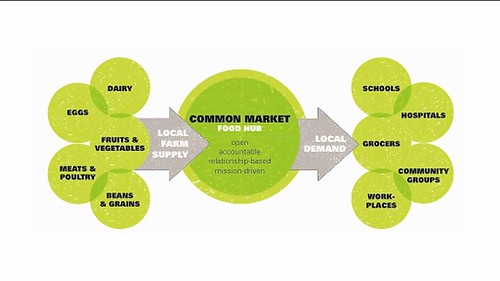
There are many communities across the country grappling with limited access to affordable, fresh fruits and vegetables at a time when these same communities are fighting rising rates of childhood obesity, type 2 diabetes, and other diet-related illnesses. The very definition of community—that inter-connectedness between residents, businesses, hospitals and schools—means that health or food issues that affect one part of the community can have a negative impact on the rest.
At USDA’s Agricultural Marketing Service (AMS), we are examining food hub distribution models of all shapes and sizes--finding ways to compliment and supplement existing food systems as a way to overcome these challenges.
Recently, I was asked to talk about food hub distribution models as part of a video about Common Market, a food hub serving the Philadelphia area. This opportunity gave me the chance to discuss the challenges we face in connecting farmers in rural areas with consumers in urban communities, and how food hub models can help us redefine the way food gets to our tables.
A food hub model like the one being used in Philadelphia can work to everyone’s advantage, using the community as a whole to make the system viable. By leveraging the buying power of schools, hospitals, elderly care centers and corner markets to create consistent demand, you can then harness the growing power of local farms to create consistent supply.

Costs remain low because less transportation and storage is needed to get the food to the community while it’s still fresh. By linking producers to communities, food hubs create a win-win arrangement where communities are getting greater access to healthy fresh food, and farmers are gaining entry to new markets that would be difficult or impossible to access on their own.
As we research and explore new methods and models, we will share lessons learned, best practices and a list of available resources on our food hub website. To learn more about the work being done in Philadelphia, check out the full Common Market story on YouTube.
